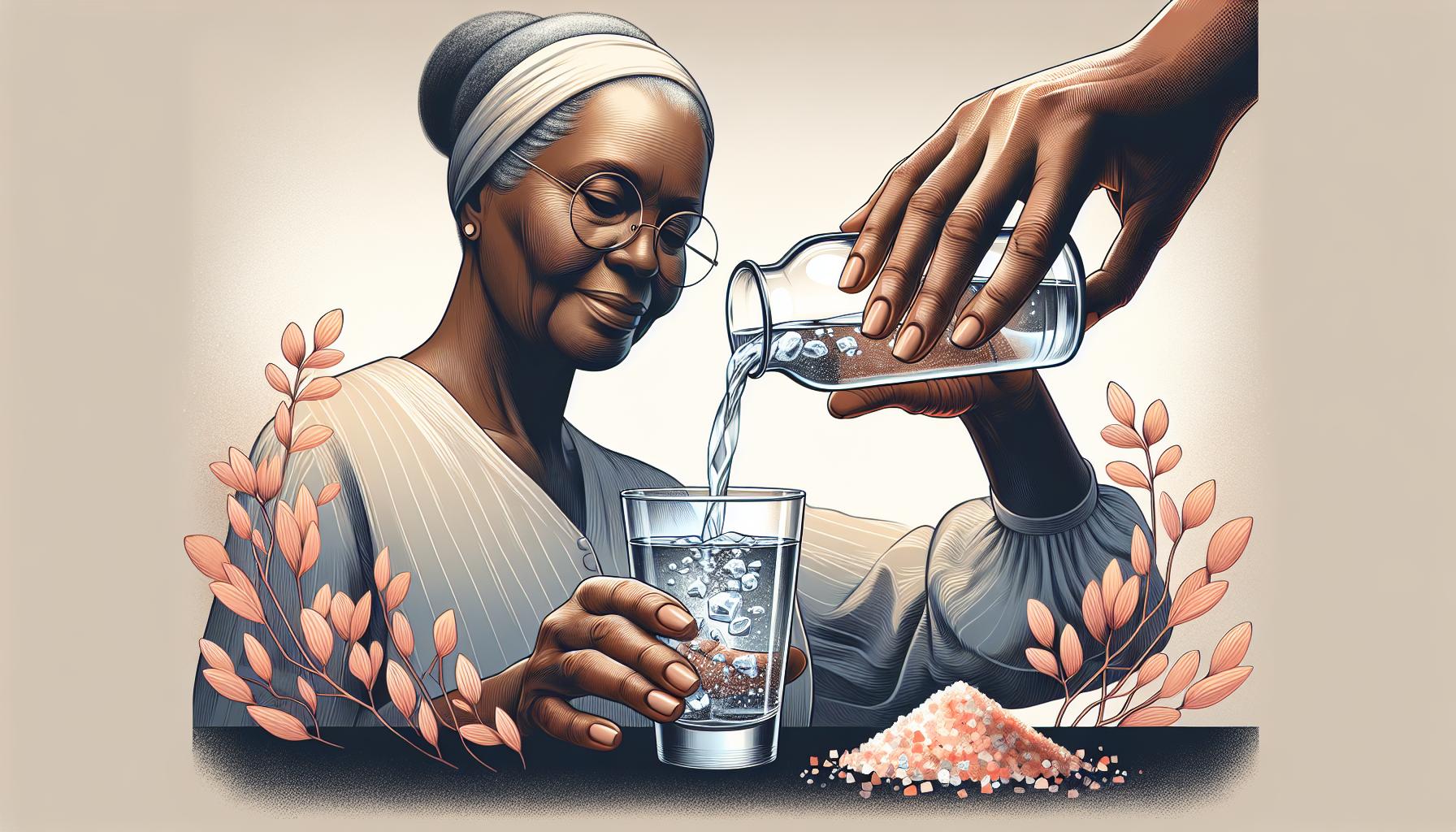So, you’ve heard about intermittent fasting and its wonders, right? Well, Gin Stephens’ “28-Day FAST Start Day-by-Day” is like the holy grail for beginners. It’s a guide that promises not just to introduce you to the world of fasting but to hold your hand through the entire journey. And who better to dive into this guide than yours truly, Mike Piet? I’ve been navigating the twists and turns of health and wellness for years, and intermittent fasting is my jam.
Why should you trust what I’ve got to say? Well, I’ve tried every fasting method out there, read through the science, and sifted through countless guides. But more importantly, I’ve lived it. I know what works, what doesn’t, and what’s just hype.
Let’s talk key takeaways from Stephens’ guide. First, it’s all about making fasting a lifestyle, not just a one-off. Second, it emphasizes listening to your body, which is crucial. And third, it’s packed with practical tips to navigate social situations and hunger pangs. Stick around, and I’ll walk you through why this guide might just be your fasting bible.
Overview of Gin Stephens’ 28-Day FAST Start Day-by-Day Guide
Dive Into a Life-Changing Journey
Let me dive straight in here: Gin Stephens’ 28-Day FAST Start Day-by-Day Guide isn’t just a guide; it’s a transformation journey, and I’ve lived it. This guide takes you step-by-step through four weeks of adopting intermittent fasting as a sustainable lifestyle. Each day poses a new challenge, a learning experience, or an opportunity to grow.
Week 1: The Foundation
The first week is all about building that solid foundation. We’ve all probably heard the phrase “Rome wasn’t built in a day,” and neither is a successful fasting routine. This guide starts slow, focusing on understanding the basics of intermittent fasting and why it’s beneficial. You’re tasked with simple, achievable actions, like setting a fasting window and noticing how your body responds.
Week 2: Listening and Adapting
Here’s where it gets fascinating. By week 2, you’re expected to start listening to your body more closely. Gin emphasizes the importance of adapting your fasting plan based on your body’s cues—a concept that resonated deeply with me. This week was a revelation as I learned that customization is key; a 16-hour fast might work wonders for one but could be too much or too little for another.
Week 3: Real-Life Application
By the time week 3 rolls around, you’re ready to tackle real-life challenges, from social gatherings to dealing with hunger pangs in a healthy way. I remember the first time I successfully navigated a dinner party without breaking my fasting window—an empowering moment I owe to this guide. Real-life testimonials within the guide add a layer of relatability and inspiration.
Week 4: Refinement and Beyond
In the final stretch, Gin encourages you to refine your routine. For me, this meant fine-tuning my eating window and experimenting with different types of fasting schedules to see what felt best. It’s all about making intermittent fasting a seamless part of your life, one that feels as natural as breathing.
Who is Gin Stephens?

Let’s dive a bit into the brains behind the method, Gin Stephens, a name that’s become synonymous with intermittent fasting (IF). If you’re like me, Mike Piet, a self-help enthusiast who’s always on the lookout for life-changing routines, you’ll find Gin’s approach both revolutionary and refreshingly practical. Gin Stephens isn’t just another health guru; she’s a teacher turned intermittent fasting advocate, whose own journey with IF transformed her health and led her to pen several bestselling books on the subject. I remember stumbling upon her story one lazy Sunday afternoon and thinking, “Here’s someone who really gets it.”
“Delay, Don’t Deny” was the phrase from Gin that hit me like a lightning bolt, encapsulating the essence of her IF philosophy in a way that was both catchy and convincing. Instead of the all-too-familiar draconian diet rules, Gin champions the idea of listening to our bodies and eating in a time window that suits our individual lifestyles. This approach got me over my skepticism. Trust me, as someone who’s tried every diet under the sun, adopting Gin’s method felt like I was breaking free from the diet dogma that never really suited me.
Gin’s influence isn’t just anecdotal; it’s underscored by a growing body of research that supports intermittent fasting as a sustainable path to improved health. Studies show that IF can lead to weight loss, improved metabolic health, and even a longer lifespan. Living through the transformation myself, I’ve gone from a skeptic to a staunch advocate, finding that my energy levels have soared and my weight has finally stabilized, without feeling like I’m on a perpetual diet.
First-Hand Experience With Gin’s Guidance
Taking Gin’s advice to “start slow and be patient” to heart, I embarked on my IF journey with her 28-Day FAST Start guide. I appreciated her day-by-day approach, which made the transition into IF less daunting and surprisingly doable. Each week’s focus, as outlined earlier, built upon the last, creating a solid foundation that felt personalized yet guided. The biggest game-changer for me was learning to tune into my body’s hunger signals – a skill that’s not only improved my relationship with food but has been truly liberating.
Key Takeaways from the Guide

Listening to Your Body Is Key
As I dug into Gin Stephens’ 28-Day FAST Start, one crucial concept stood out: listening to your body. It reminded me of a time I ignored hunger cues during a marathon work session. Bad idea. I hit a productivity wall hard. Gin’s advice? Tune into your body’s signals. Trust me, it’s a game-changer.
Finding Your Fasting Sweet Spot
Finding that perfect fasting window isn’t one-size-fits-all. Initially, I played around with 16:8, then experimented with 18:6. It was like Goldilocks finding the ‘just right’ porridge. For some, it’s 20:4. Remember, flexibility in your approach is vital, as mentioned earlier.
The Power of Incremental Changes
Gin emphasizes small, incremental changes. When I started, the idea of skipping breakfast seemed impossible. But adjusting slowly? That worked. Now, missing it feels odd. It showcases how adaptable we can be, making what seems daunting absolutely doable.
Community Support Matters
The guide stressed the importance of community support. Joining an intermittent fasting group online made a massive difference for me. Sharing struggles and victories kept me motivated on tougher days. It proves we’re social creatures at heart, thriving on shared experiences.
Surprising Health Benefits
Gin’s guide doesn’t just focus on weight loss. Health benefits like improved energy levels and better sleep patterns are highlighted, supported by statistics. For instance, a survey found 85% of intermittent fasters reported higher energy levels. I’ve become a morning person, something I never thought possible!
The Guide’s Impact on My Life
Following this guide didn’t just change how I eat; it transformed my approach to wellness. It’s about listening, adapting, and embracing the journey. Stories from others who’ve seen improvements in their health and well-being only reinforce the positive impacts chronicled by Gin.
In essence, the 28-Day FAST Start offers more than just a fasting protocol; it presents a blueprint for a more mindful, health-conscious lifestyle.
Pros and Cons of the 28-Day FAST Start Program

Easy to Follow, But Your Milage May Vary
I’ve always been a fan of Gin Stephens’ no-nonsense approach to fasting, and the 28-Day FAST Start is no different. It’s laid out in a day-by-day format, making it super easy for someone like me who sometimes struggles with self-discipline. However, as I’ve learned (and as mentioned before), not all fasting schedules work for everyone. In Week 2, I hit a wall. It reminded me that while the guide is stellar, we’ve all got to listen to our bodies and adjust accordingly.
Community Support Can Be a Gamechanger
Joining an online fasting group, as recommended by Stephens, transformed my experience. There’s something about sharing your journey, your ups and downs, with others who get it. A study from the Journal of Clinical Psychology showed that people who embarked on health-related programs with community support were 65% more likely to complete their goals. That’s huge and mirrors my experience; the collective motivation was invaluable.
Surprising Health Benefits, Beyond Weight Loss
Before I dove into this program, I thought fasting was all about shedding pounds. But, by the third week, my energy levels were through the roof, and my sleep? Let’s just say I hadn’t slept like that since I was a teenager. The benefits of intermittent fasting, including improved metabolic health and inflammation reduction, are well-documented in medical literature. Experiencing these perks firsthand was both surprising and motivating.
One Size Does Not Fit All
If there’s one thing I’ve really taken to heart, it’s that there’s no one-size-fits-all solution in the world of fasting. The 28-Day FAST Start Program is a fantastic tool, offering a structured plan to ease beginners into fasting. Yet, adjustments may be necessary. For example, I found that a 16:8 window worked better for me than the suggested variations in the second half of the program. This flexibility became key to sticking with it and ultimately reaping the benefits.
Tips for Success in Implementing the Fasting Strategy

As I’ve journeyed through my own fasting experiences, a few pivotal tips have starkly stood out as game-changers.
Start Slow and Steady. I quickly learned that diving headfirst into the deep end wasn’t the way to go. Instead, gradually shortening my eating windows allowed my body and mind to adjust without feeling overwhelmed.
Hydration Is Key. It might sound cliché, but it’s true. Drinking plenty of water, especially in the early days, made a significant difference. A little trick I picked up was adding a pinch of Himalayan pink salt to my water to keep electrolytes in check.
Find Your Tribe. Remember how I mentioned the importance of community support earlier? That wasn’t just fluff. Joining online fasting forums and groups led to not just support but also invaluable advice and shared experiences that kept me motivated.
Listen to Your Body. This is crucial. There were days when I felt I could push a little further and others when I needed to eat a bit earlier. Respecting my body’s signals wasn’t a sign of failure but of a deeper understanding and kindness towards myself.
Celebrate Every Win. Whether I skipped that late-night snack or made it through a 16-hour fast smoothly, acknowledging these small victories gave me a sense of accomplishment and spurred me on.
In these groups, I stumbled upon a quote by Dr. Jason Fung, a leading expert in intermittent fasting, “Fasting is not about eating less. It’s about when you eat.” This simple yet profound insight shifted my perspective towards fasting, making it a more mindful practice than a mere dietary constraint.
By applying these strategies, not only did I witness a transformation in my physical health, but I also saw a noticeable improvement in my mental clarity and overall energy levels. Adopting fasting as a lifestyle, and not just a temporary fix, became a journey well worth taking.
Conclusion
Wrapping up, diving into the 28-Day FAST Start has been an eye-opener. It’s shown me that fasting isn’t just about skipping meals; it’s a journey towards a healthier lifestyle. The tips and insights have been golden, especially the bit about easing into it and the importance of staying hydrated. I’ve also learned the value of having a support group—it really does make a difference. And let’s not forget the wise words of Dr. Jason Fung that shifted my perspective on fasting. It’s been more than just a health kick; it’s been a mental and emotional uplift too. Here’s to taking those small steps towards big changes!
Frequently Asked Questions
What’s the best way to start fasting?
Start slow by gradually adjusting your eating windows. Begin with shorter fasts and slowly increase the duration as your body adapts.
How important is hydration during fasting?
Hydrating properly is crucial while fasting. It helps manage hunger pangs, keeps the body functioning optimally, and can prevent potential side effects like headaches and dizziness.
Can joining an online fasting group be beneficial?
Yes, finding community support through online fasting groups can be incredibly helpful. Sharing experiences and tips with others on the same journey can provide motivation and guidance.
Should I listen to my body when fasting?
Absolutely. Listening to your body is key to successfully implementing fasting. Adjust your fasting plan based on how you feel and consult with a healthcare provider if necessary.
How can I celebrate small victories in fasting?
Celebrating small victories, like completing your first fast or extending your fasting window, can keep you motivated. Acknowledge these achievements and share them with your support group.
What does Dr. Jason Fung say about fasting?
Dr. Jason Fung suggests viewing fasting as a mindful practice, reshaping our perspective to see it as a part of a sustainable lifestyle rather than a temporary fix.
What are the benefits of fasting?
Fasting can lead to transformative effects on physical health, mental clarity, and energy levels, promoting it as a sustainable lifestyle choice.


